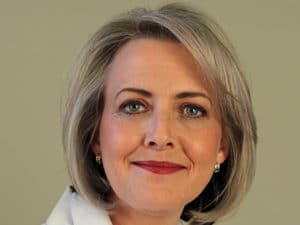
This month we introduce Dr. Tracey Hillier who has provided medical services both in Canada and globally. She describes her passion for social justice, social accountability and provides measurable and meaningful strategies to promote diversity, equity, and inclusion in radiology.
Dr. Tracey Hillier serves on the Board of Directors for CETARS, the Canadian Emergency, Trauma and Acute Care Radiology Society (an affiliate of the CAR). She is an Associate Professor in the Department of Radiology and Diagnostic Imaging at the University of Alberta and was the first Indigenous Associate Dean for a Medical School Program in Canada.
Dr. Hillier completed her MD (1997) and a residency in family medicine (1999) at McMaster University. She practiced family medicine at the Canadian Forces Base in Edmonton. She later completed a residency in radiology and diagnostic imaging at the University of Alberta and a fellowship in emergency trauma radiology at the University of British Columbia (2011). She has a Master’s in Education from the University of Alberta (2016).
As a radiologist, she has worked at the Misericordia Hospital in Edmonton, Vancouver General Hospital, as well as in Canadian Forces Radiology clinic settings. She is currently the Director for the Alberta Institute, an international medical school collaboration between the University of Alberta and Wenzhou Medical University in China.
Dr. Hillier’s interest in global health led her to Honduras, Tanzania, and Haiti to provide primary care medical services to local populations. These experiences shaped her perspective and interest in development projects that address the primary determinants of health such as income, education, and culture.
“I believe that medicine is a service profession and that as a profession, we will have the best patient outcomes when we better reflect the populations that we serve.”
Dr. Hillier has been fortunate to have had supportive mentorship from two department chairs who encouraged her to take on leadership roles in medical education. Now she mentors diverse learners in their medical education journey. She knows first-hand how hard it can be to be the first person in your family to go to University; to struggle academically; to pursue medicine when you don’t have the same social capital as others from more affluent backgrounds; to transition from life in a small town to working at a quaternary academic health center; and to fit into environments that reward individual accomplishments different from your own worldview.
Leading on the issue of: Equity, Diversity, and Inclusion
Dr. Hillier’s research and scholarly interests include equity and inclusion, fostering medical leadership, and developing a curriculum that addresses the significant health disparities that exist between Indigenous and non-Indigenous Canadians. She serves on the University of Alberta Indigenous Advisory Committee and led a review of medical school admissions for the University of Alberta with the goal to identify and remove barriers to increase diversity in the medical student population.
Over the past 10-15 years Dr. Hillier has learned new and more appropriate language regarding diversity, equity, and inclusion.
“To achieve our stated goals of improving equity, diversity, and inclusion we must reconsider old notions of meritocracy and look at what we choose to value, measure and reward regarding excellence and merit.”
There is so much that we can do as radiologists to improve equity, diversity, and inclusion in the field. Dr. Hillier has several suggestions:
- Promote greater diversity in the medical student body.
- Recognize the inherent inequity in “treating everyone the same” when we all have different starting points. In other words, equality is not the same as equity.
- Recognize it is problematic to claim to be “colour blind” when striving for equity and inclusion.
- Volunteer to provide diversity mentorship to students considering a career in medicine and to diverse medical students once they are admitted.
- Protect a residency position for Indigenous applicants.
- Diversify search committees when hiring in your department or practice.
- Provide mentorship and sponsorship to women radiologists, implement flexible work schedules, strengthen policies that support career-life balance, and embrace diversity among all team members.
- Create a leadership role within your department to support diversity, equity, and inclusion.
- Inform yourself about the reality of systemic racism in health care and work towards creating a culturally and psychologically safe work and learning environment.
As a result of her commitment to diversity, equity, and inclusion Dr. Hillier was selected as a recipient of a University of Alberta Equity, Diversity, and Inclusion Award.
Dr. Hillier was born and raised in Stephenville Newfoundland, a small town on the west coast of the island in traditional Mi’kmaq territory. She belongs to the Qalipu First Nation. In addition to her academic career, Dr. Hillier was a member of the Canadian Armed Forces for 27 years. She is married to Sukhvinder Dhillon, an MSK radiologist and she is the proud mother of 5 children.
Note: On December 9, 2020, the CAR Board voted to approve an Equity, Diversity, and Inclusion Working Group that was put forward by Dr. Charlotte Yong-Hing and a group of leading radiologists from across the country.
